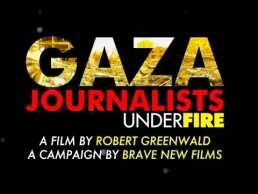What is the real story behind the New York Times October 7 exposé?
by Jeremy Scahill, Ryan Grim, and Daniel Boguslaw, The Intercept
Anat Schwartz had a problem. The Israeli filmmaker and former air force intelligence official had been assigned by the New York Times to work with her nephew Adam Sella and veteran Times reporter Jeffrey Gettleman on an investigation into sexual violence by Hamas on October 7 that could reshape the way the world understood Israel’s ongoing war in the Gaza Strip. By November, global opposition was mounting against Israel’s military campaign, which had already killed thousands of children, women, and the elderly. On her social media feed, which the Times has since said it is reviewing, Schwartz liked a tweet saying that Israel needed to “turn the strip into a slaughterhouse.”
“Violate any norm, on the way to victory,” read the post. “Those in front of us are human animals who do not hesitate to violate minimal rules.”

The New York Times, however, does have rules and norms. Schwartz had no prior reporting experience. Her reporting partner Gettleman explained the basics to her, Schwartz said in a podcast interview on January 3, produced by Israel’s Channel 12 and conducted in Hebrew.
Gettleman, she said, was concerned they “get at least two sources for every detail we put into the article, cross-check information. Do we have forensic evidence? Do we have visual evidence? Apart from telling our reader ‘this happened,’ what can we say? Can we tell what happened to whom?”
Recent Posts
The Dangers Of Nuclear War Have Never Been Higher
July 16, 2025
Take Action Now Yet mainstream US media outlets and partisan politics are routinely oblivious to threat of oblivion.By Norman Solomon, The Nation…
‘Gaza Journalists Under Fire’, A Zero Hour Conversation With Robert Greenwald
July 16, 2025
Take Action Now Robert Greenwald appeared on The Zero Hour to discuss “Gaza: Journalists Under Fire,” his new documentary on the 200+…
Is A Citizens United 2.0 Right Around The Corner?
July 15, 2025
Take Action Now Is it possible for American democracy to be further degraded by the influence of billionaires? Thanks to champion of the working…
U.S. Leaders Gave Up On Diplomacy With Iran. We Must Make Them Return To It.
July 15, 2025
Take Action Now Building an antiwar movement means preventing the systemic U.S. aggression that creates the conditions for war.By Hanieh Jodat,…




